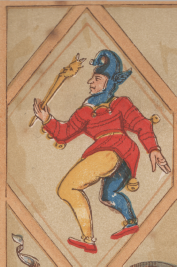Battle of Dyrham –
did 10,000 die here Hinton Hill Fort near Bath -
The remains of the old extension of Dunsdown Lane, that ran past Hinton Fort and was the route that Ceawlin took to capture and defeat the Britons at the Battle of Dyrham
This year Cuthwin and Ceawlin fought with the Britons, and slew three kings, Commail, and Condida, and Farinmail, on the spot called Deorham, and took from them three cities, Gloucester, Cirencester, and Bath.”sending slaves to the Vikings in Dublin
sending slaves to the Vikings in Dublin, Ireland
Exactly when the city was founded is unknown. The earliest relic is a silver coin in the Royal Collection at Stockholm, Sweden. The coin bears the image of Ethelred Unrede (978 – 1016) and was minted in Bricgstowe (Bristol) by a man named Aelfweld. If Bristol was important enough to have a mint by 978 it must have been in existance sometime before then.
It is fairly certain that no town existed here before 577 AD. The reason being that in 577 two Saxon kings (Cuthwine and Ceawlin) fought and killed three British kings (Commail, Condidan and Farinmail) at a village called Dyrham near Pucklechurch, just outside of the present city. Although the towns of Bath, Gloucester and Cirencester are mentioned in the account of this battle, Bristol isn’t mentioned at all, even though it would have been closer than those mentioned.
Thus, Bristol was founded sometime between 577 and 978 AD. Even by this latter date the town was known to be dealing sending slaves to the Vikings in Dublin, Ireland.
Bridges at this time were of vital importance. There are three reasons why Bristol, as a port, is situated 7 miles inland with access to ships up a very tortuous river. A bridge across the Avon nearer it’s mouth would have been technologically very difficult, the land there was very prone to flooding and the town would have been very exposed to attack. Ships would make their way up the Avon until they reached Bristol Bridge and lay beached at low tide on the mud ready to be unloaded
Labels: 577, Battle of Dyrham, kelston, Keynsham Abbey, Legio II Augusta, st.keyna, The Alfred Jewel
Saturday, 23 July 2016
sending slaves to the Vikings in Dublin
sending slaves to the Vikings in Dublin, Ireland
Exactly when the city was founded is unknown. The earliest relic is a silver coin in the Royal Collection at Stockholm, Sweden. The coin bears the image of Ethelred Unrede (978 – 1016) and was minted in Bricgstowe (Bristol) by a man named Aelfweld. If Bristol was important enough to have a mint by 978 it must have been in existance sometime before then.
It is fairly certain that no town existed here before 577 AD. The reason being that in 577 two Saxon kings (Cuthwine and Ceawlin) fought and killed three British kings (Commail, Condidan and Farinmail) at a village called Dyrham near Pucklechurch, just outside of the present city. Although the towns of Bath, Gloucester and Cirencester are mentioned in the account of this battle, Bristol isn’t mentioned at all, even though it would have been closer than those mentioned.
Thus, Bristol was founded sometime between 577 and 978 AD. Even by this latter date the town was known to be dealing sending slaves to the Vikings in Dublin, Ireland.
Bridges at this time were of vital importance. There are three reasons why Bristol, as a port, is situated 7 miles inland with access to ships up a very tortuous river. A bridge across the Avon nearer it’s mouth would have been technologically very difficult, the land there was very prone to flooding and the town would have been very exposed to attack. Ships would make their way up the Avon until they reached Bristol Bridge and lay beached at low tide on the mud ready to be unloaded.
Posted by mengele at 11:21 Links to this post
Email This
BlogThis!
Share to Twitter
Share to Faceboo
Labels: 577, Ireland, slaves
